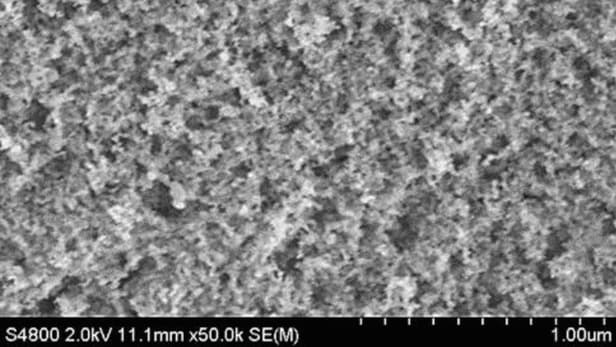Scientists at Rice University, the University of Swansea, the University of Bristol and the University of Nice – Sophia Antipolis have developed a new class of hydrocarbon-based material that they say could be “greener” substitute for fluorocarbon-based materials currently used to repel water.
Rice chemist Andrew Barron led the research. He says the team took inspiration from the lotus leaf – one of the most hydrophobic (water-repelling) surfaces known – which is actually made up of a hierarchy of double structures on the microscopic and nano scales.
“In the lotus leaf, these [structures] are due to papillae within the epidermis and epicuticular waxes on top,” he said. “In our material, there is a microstructure created by the agglomeration of alumina nanoparticles mimicking the papillae and the hyperbranched organic moieties simulating the effect of the epicuticular waxes.”
In order to create those structures, synthesized aluminum oxide nanoparticles were coated with carboxylic acids modified to contain “highly branched hydrocarbon chains.” These are spiky structures that make the surface rough, trapping a layer of air to reduce contact between the surface and water droplets, making the water slide off.
Superhydrophobic materials are defined as having a water contact angle more than 150 degrees, where 0 degrees is a puddle and 180 degrees is a sphere of water just touching the surface at a single point. The research team’s material achieved an angle of 155 degrees, putting it in the same league as top-notch fluorocarbon-based coatings. A demo can be seen here.
Barron says the coating could be ideal for marine applications where a more eco-friendly material is desired to protect aquatic life. He also claims it could be tougher than competing coatings.
“The textured surfaces of other superhydrophobic coatings are often damaged and thus reduce the hydrophobic nature,” he said. “Our material has a more random hierarchical structure that can sustain damage and maintain its effects.”
Next up, the team will work on improving the material’s adhesion to various surfaces and large-scale applications.
A paper on the research was recently published in the journal Applied Materials and Interfaces.
Source: Rice University
Dear User/Visitor! Please, answer on our questions: tick off one of the positions – your answer will make us able to improve our site and make it more interesting and useful!


